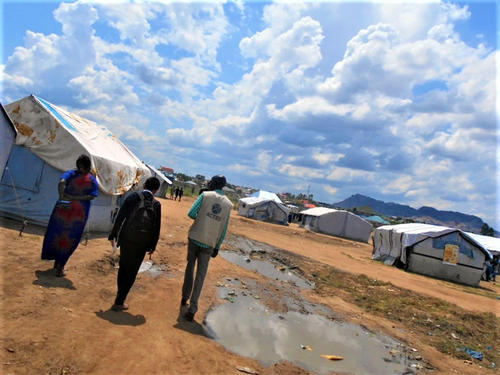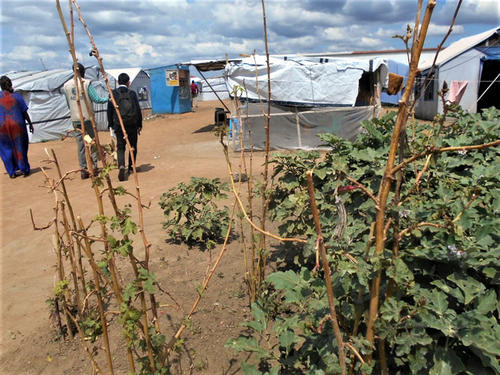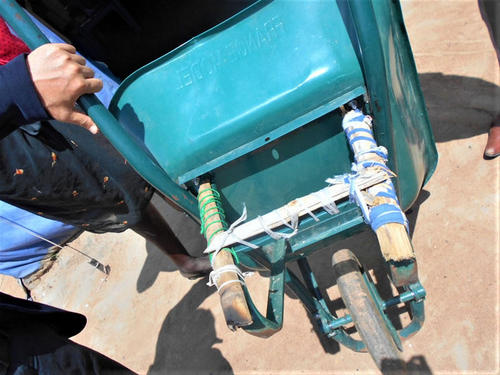[Original by Takayuki YAMAMOTO, Sudan Project (November 12, 2019); Translated by J. Sparks]
Camp 1 Population Doubles
In September of 2018, at the refugee shelters operated by the UN (hereinafter referred to as UN facilities) on the outskirts of Juba, a conflict broke out between the refugees, and the JVC supported Mangaten Camp 1 experienced an influx of over 3,000 refugees. This largely increased the number of children and families in the camp, which led to new tents being put up for the refugees.
“The number of people living in the camp has grown to 7,500 (the actual number is unknown, though is estimated at roughly 5,000), and living space and schools are not keeping up. Within the camp, dozens of families are sharing a single warehouse, but with the large addition of people, many have begun to live in very tight conditions” laments Nyal Peter, an NGO worker that helps oversee the camp.
One of the individuals from the female group, Mona, also joined and helped guide us through the camp, which has completely changed its form since the last visit.

Many tents were built at the camp, and it was full of people.
“With so many people coming from the other refugee camps, UN agencies and NGOs that were providing education, water supplies, and food distribution have begun to provide support at Camp 1. However, the problem is that they are only providing support to individuals that came from the UN facilities. Those that were already at the Mangaten camp are not included.”
Impact on Vegetable Garden Support
In this area, two crops are harvested a year, and in the first season before the numerous refugees arrived, crops in the vegetable gardens grew steadily and there was a good harvest.
“Within the women’s group there were members that had successfully harvested 3 hemp bags of peanuts and processed them into peanut butter that they sold!”
Unfortunately, in the second harvest season a lack of water led to a poor harvest, however it is true that vegetable gardens have helped women groups live.
“But tents and water supplies were built for the residents of the new camp, and the okra and jute mallow and peanuts that were being raised are all gone. Only the eggplant fields were safe. This whole area used to be a field.” said Mona with a sad expression.

The remainder of a vegetable garden next to a tent.
Originally, the UN was supporting the building of tents as well as the installation of pumping water wells at this camp in the area where the refugees were cultivating their vegetable gardens. For the women that lost their source of income in the form of their vegetable garden, they continued to raise small crops next to their tents.
Wheelbarrow supported by JVC
Furthermore, the wheelbarrows previously distributed were kept inside tents as promised, however they were not kept in good condition, as some had parts broken and were unusable, and things were piled on top of them.
Still, it seems that it was used back when there was still a field,
“When the vegetables were harvested and before they broke, I often used them to carry the crops” said a member of the women’s group.
In addition, some woman said, “it was broken down for a while, but it’s repaired and reinforced with wooden sticks, and now I use it to carry water and charcoal.”

A wheelbarrow reinforced with wood.
As mentioned above, given the large influx of refugees, many UN agencies and NGOs have begun to support activities, and thus JVC’s support of the Mangaten Camp 1 has temporarily come to an end.
Next time I will report on the implementation of crushers and grinder machines at Camp 2 used to support the improvement of livelihood.
Share This: